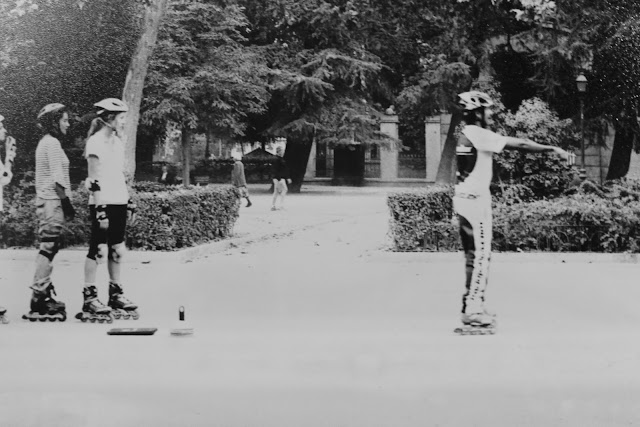APERTURE OF DIAFRAGM
We can vary the quantity of light we get by varying the aperture of the diaphragm. When we photograph a dark object, we need a big aperture, to get the more quantity of light, and vice versa. Aperture ring has f numbers, from which each step means double (or half) quantity of light over the following.
It also determines the depth of field. DEPTH OF FIELD is the area of sharpness extended in front of and behind the focused object.
The more aperture, only a little part of the scene is sharp.
There is more depth of field with F8, than F4
The other aspects which vary the depth of field are the distance to the subject, and the type of lenses or zooming. The closer the camera is to the subject, less depth of field we get. Same with the zooming. The more zooming, the less depth of field.
SHUTTER SPEED
It determines the time the film is exposed to light. The less shutter speed, the less uncertainty the movement will cause, forming a frozen image. It also will get less light. If we use more shutter speed, we will get a blurry image, and more light.
125 shutter speed is used to make a frozen image of a pedestrian walking.
We can combine aperture and shutter speed to get a well exposed picture. Every time each step of the scale of aperture changes with other step of the scale of speed, the film will receive the same quantity of light.
ISO/ASA SENSIBILITY
Exposure, or quantity of light which gets to the film, is controlled by shutter speed and diaphragm. To get a well exposition, we have to know the sensibility of the film and the luminosity of the subject. This is possible by knowing the silver salts of the film.
Knowing this, we have to measure the light of the subject we are going to photograph. For this, we have different ways of measuring in the camera, centre balance, punctual or matrix way.
These are the scales of the characteristics:
Shutter speed: ISO/ASA APERTURE
1 25 1
2 50 1,4
4 100 2
8 200 2,8
15 400 4
30 800 5,6
60 1600 8
125 3200 11
250 16
500 22
1000 32
2000
4000
8000
Each step is in relation with his neighbor because it means double or half amount of light to get in the picture.














